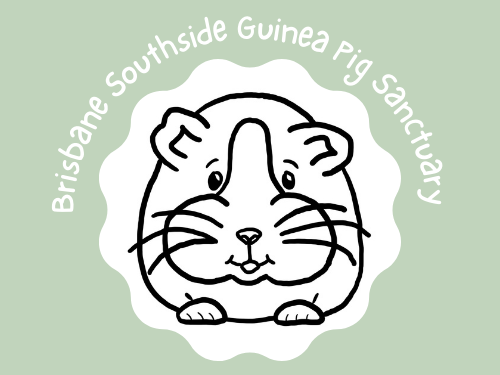What is ‘Satin Syndrome’?
Some guinea pigs have an obvious sheen to their coats. We call these satins. Whilst they’re a visually appealing breed, they are prone to a suite of illnesses commonly referred to as ‘satin syndrome’. These illnesses include fibrous osteodystrophy, dental disease, hyperparathyroidism, and kidney disease. All of these illnesses are linked and almost function as a domino effect. The dysfunction linked to kidney disease causes the onset of hyperparathyroidism. As a result of this, the pig’s body is no longer able to accurately absorb the required amounts of calcium and will begin stripping calcium from the bones. This ‘stripping’ of the bones then leads to a condition called osteodystrophy. In radiographs, osteodystrophy affected bones will appear ‘grainy’ or ‘moth-eaten’. See attached X-rays for examples. Osteodystrophy is an incredibly painful condition that requires significant devotion of time, effort and money.
I think I have a satin guinea pig, what do I do?
Regardless of the current condition of your satin guinea pig, we highly recommend a trip to an exotics vet (general practice vets are very rarely equipped or knowledgeable to treat symptoms related to satin syndrome. That is why we recommend exotics vets). At the vet, your piggy should have its joints, gut sounds, molars, incisors, weight, etc all assessed. If within budget, we implore you to complete radiographs as these will serve as a baseline for you and your vet to continue to monitor your pig’s condition over its lifetime. Early radiographs also often pick up on the beginnings of osteodystrophy before your pet is showing any outward symptoms.
There are also a number of things you can do at home to support your pig. These include:
- Using soft bedding – soft bedding such as fleece liners or vet bed are wonderful options for satins as they are easier on the joints than newspaper, paper-based cat litter, etc. If your guinea pig likes to stay in one spot, you can always put a smaller absorbent fleece pad on the spot and change it daily to avoid pododermatitis.
- Supplement vitamin C and calcium – please do this under vet supervision.
- Regular outside time – natural UVB from the sun can be helpful in managing osteodystrophy.
- Build a rapport with your vet – your exotics vet will be your second home! Take your pig for regular check ups to ensure they are being well managed.
- Research!!! – there is a lot of information on satins out there. Be sure to look into it and make educated decisions for your pet.
- Keeping an eye out for common symptoms (see below)
What are the things you should look out for?
It’s important to learn how to ‘read’ your guinea pig to be able to tell when something is wrong. Here are some things to look out for:
- Weight loss – we recommend weighing your guinea pig every two weeks.
- Lessened appetite – your guinea pig might only want to eat finely chopped veg, only leafy foods, might go off of hey, or stop eating altogether.
- Lessened Mobility/Becoming Unstable – your guinea pig may only stay in one spot for the majority of the day, may begin to ‘hop’, or may fall/roll over easier than normal.
- Pododermatitis/Bumblefoot (sores/redness on the bottom of paws) – can range from redness to large sores caused by sitting in a single spot for too long, it signifies lack of mobility due to joint pain.
- Lethargy – lessened activity, not coming out to eat, not walking around as normal, etc.
All of these signs are common symptoms we see in our satin guinea pigs who are beginning to show signs of illness. It’s very important to go to the vet when you notice even just one of these symptoms.
Please note that satin guinea pigs may also be smaller than your average guinea pig as early onset osteodystrophy can greatly impact growth (there simply isn’t enough calcium/nutrients for their bones to grow normally).
Common treatments we see:
There are multiple ways in which satin syndrome can be managed, specifically osteodystrophy. Commonly, this is in the way of pain management. Here are some examples:
- Oral pain medications – meloxicam, tramadol, gabapentin.
- Laser therapy
- Vitamin C supplementation
- Calcium and D3 supplementation
- Corrective procedures – dental procedures (very common), occasional fracture repairs, etc.
To conclude…
As always, this advice does not substitute vet care and should instead be used as a tool for education. We hope this has been helpful, and we are more than happy to answer any questions!








